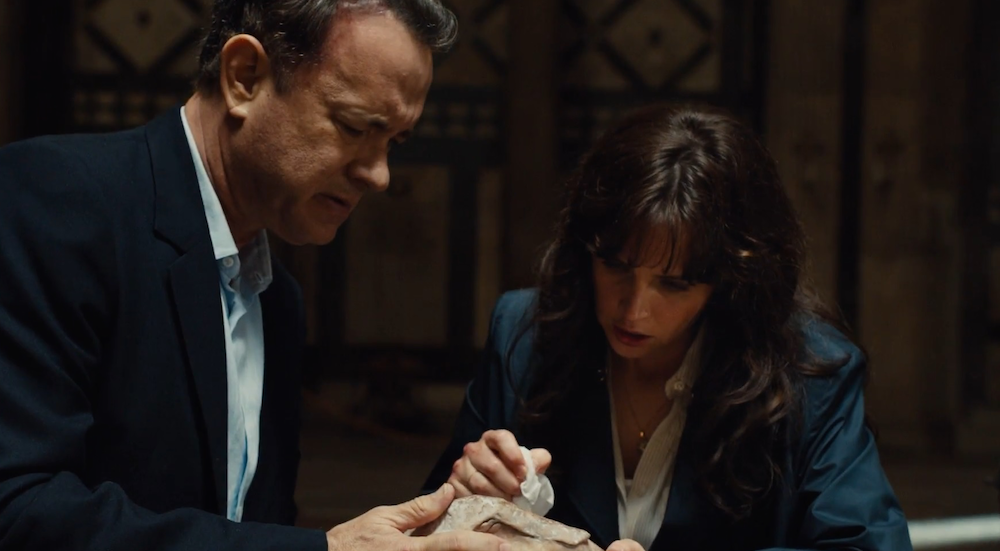Did you, like me, think, “who asked for another one of these?!” when you saw the trailer for Inferno? If you did, then friends, I cannot provide you with a good answer. The third installment of Dan Brown’s Robert Langdon adventures, Inferno, feels clunky and predictable while ditching most of its charm from its successful sibling The Da Vinci Code.
Robert Langdon (Tom Hanks) is back and this time he’s woken up in Florence (instead of Boston) with a head wound and missing all memories from the last few days. Luckily, young genius doctor Sienna Brooks (Felicity Jones) is with him. Of course, she just happens to be a fan of his and well versed in puzzles and history. That works to his advantage when they are forced to flee together and figure out the clues a madman billionaire named Bertrand Zobrist (Ben Foster) has left behind after committing suicide.
Convinced of the world’s demise due to overpopulation, Zobrist has created a new plague and planted it somewhere in the world, somewhere only someone like Robert Langdon could find. Add in a few government agencies, double agent spies, and one Irrfan Khan bright spot as a never ruffled private sector covert businessman, and you’ve got all the fixins for an action movie.
But that’s the problem. Dan Brown’s books were never successful because they’re great action novels. Instead, Dan Brown amassed a following because Langdon sees clues when no one else does. He solves puzzles and has such deep knowledge of history that he’s unstoppable. Unfortunately, Inferno seems to forget that part.
Sure, there’s lots of running around beautiful cities and looking at artwork, but it’s nowhere near as precise or conspiratorial as the clues that made The Da Vinci Code such a hit. Langdon was Sherlock before Benedict Cumberbatch ever got cast in Sherlock. But here, middle-aged and nursing a head wound and memory loss, Langdon struggles to even figure out a simple anagram.
The action scenes are tense if not rote and there are a few big twists that help keep the audience on their toes. The main clues in Inferno involve Dante’s Inferno, the first part of his three-part epic poem The Divine Comedy. It’s basically a very graphic journey through literal hell – a place comprised of nine circles of suffering. (If you’ve never read it, give it a try if only to marvel at Dante’s imagination in creating some of the punishments.) With such violent source material, Langdon begins hallucinating visions of hell. A street flooded with blood and people with their heads turned 180 degrees means Inferno is certainly a gorier film than its predecessors.
It’s telling that someone like myself, who graduated with a degree in art history (specializing in Renaissance art), couldn’t get into this film. The most emotion I felt was when someone falls through the ceiling of the Uffizi Gallery in Florence, ruining a fresco painting in the process. Sure it was digitally done, but it still hurt.
Inferno’s characters and plot seem thrown together and Dan Brown’s trademark history puzzles just don’t excite like they used to. That said Inferno is not impossible to watch. The scenery is dazzling and it’s hard to hate anything that stars Tom Hanks. I just hope this will be the last we see of Robert Langdon, at least on the screen.

